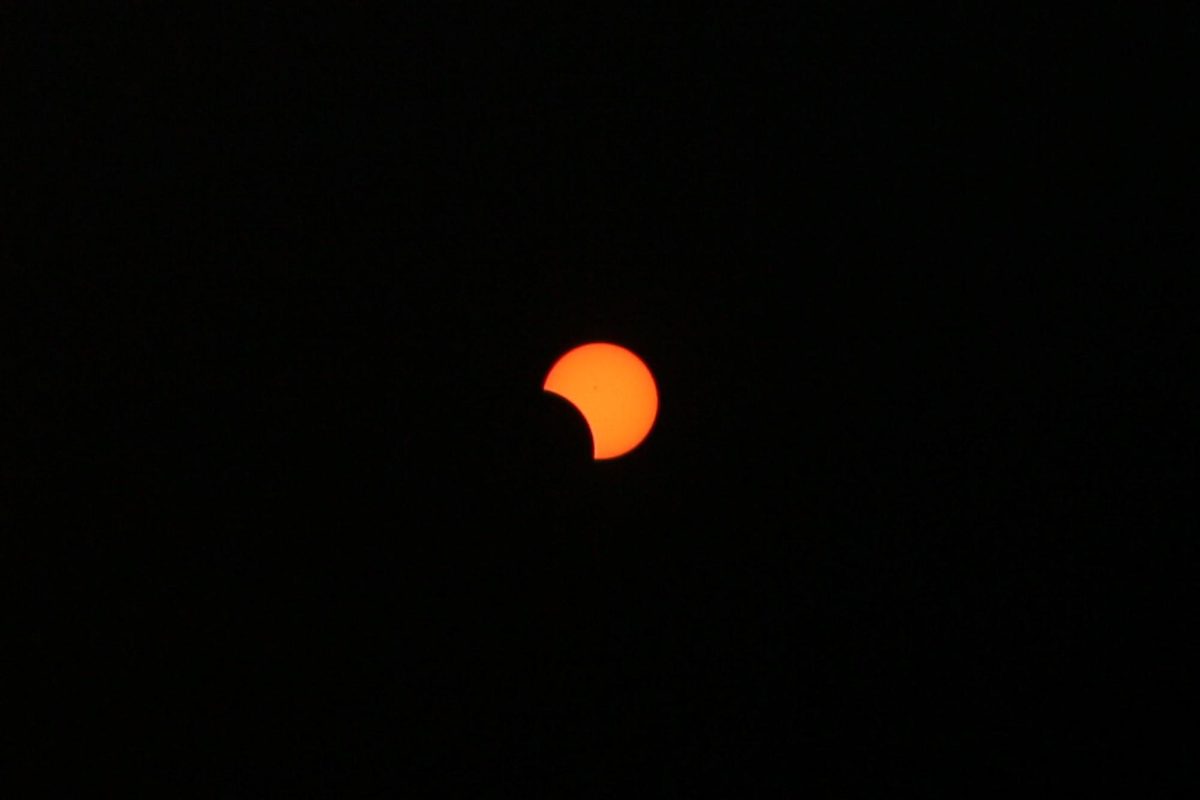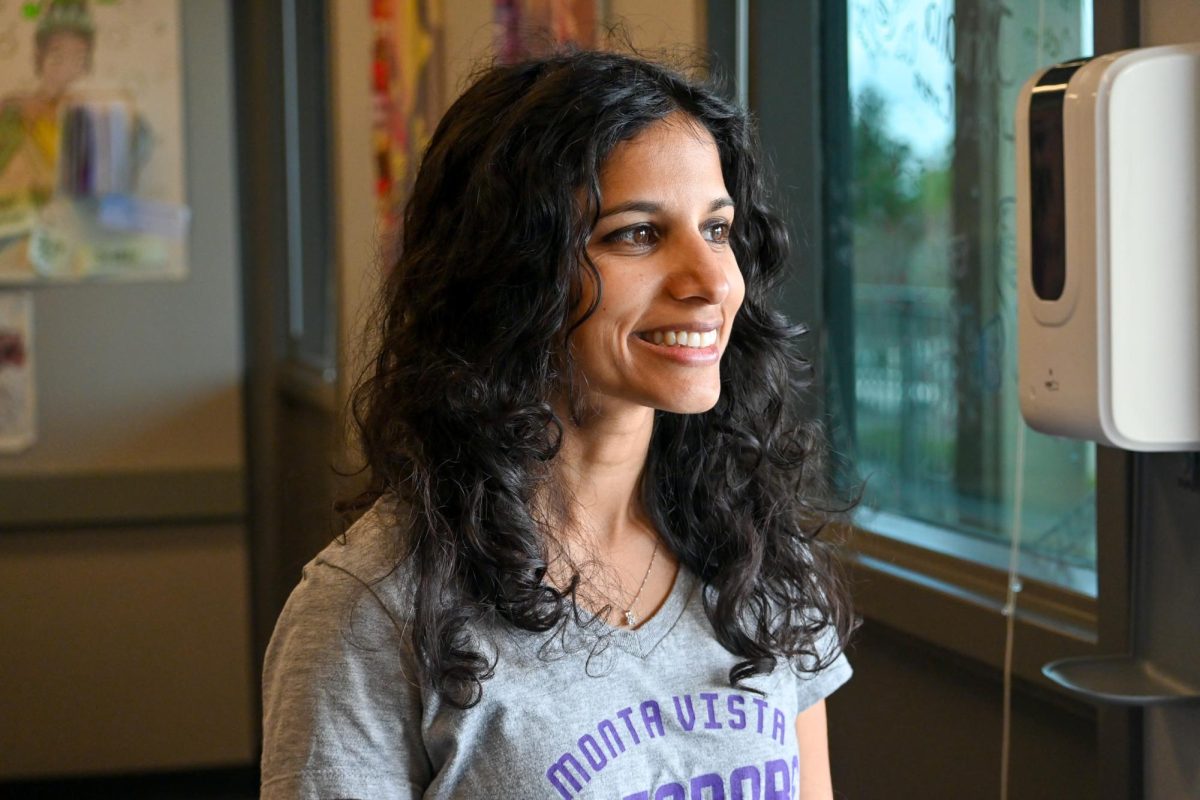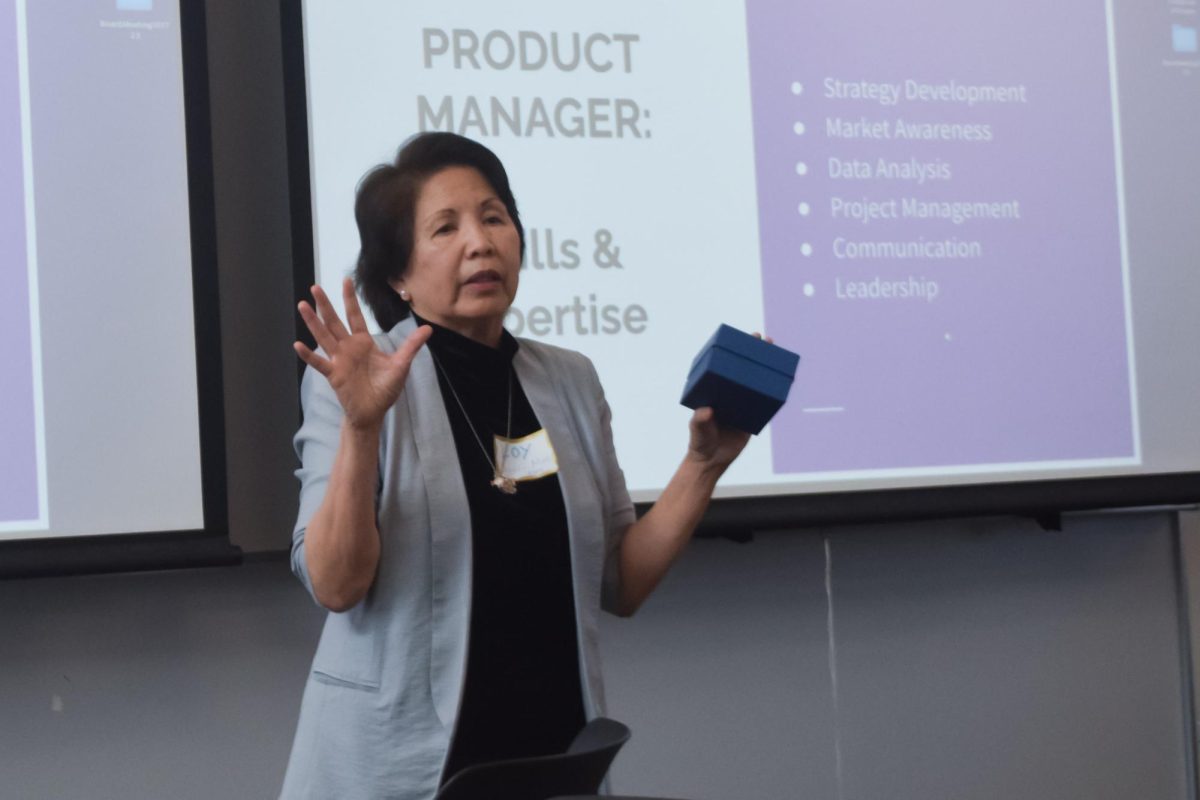Among the students and teachers at MVHS is a handful of people who don’t quite fit into either category — they’re past the student age but they’re still learning how to take on the role of a teacher. They’re student teachers who, by working alongside their mentor teachers, are slowly going through the process of becoming teachers.
Returning to MVHS
Five years after graduation, alumna Amber Myerholtz is back at her alma mater, MVHS, this time as a student teacher. Myerholtz is currently enrolled at the teaching credential program at Santa Clara University. Her supervisor for her teaching program is good friends with principal April Scott, which is why Myerholtz was able to come back to MVHS and why MVHS has a relatively large number of student teachers. Returning to her old high school has been a good experience for Myerholtz, even though it was strange at first to not be a student any more.
“It’s definitely kind of weird that the teachers are now my colleagues,” Myerholtz said. “I called everyone Ms. Moore and Ms. Lerner and they would correct me. And Mr. Hicks, he was my biology teacher, so I still call him Mr. Hicks. I could never call him Michael, there’s no way.”
“It’s definitely kind of weird that the teachers are now my colleagues. I called everyone Ms. Moore and Ms. Lerner and they would correct me. And Mr. Hicks, he was my biology teacher, so I still call him Mr. Hicks. I could never call him Michael, there’s no way.”
Myerholtz graduated in the Class of 2010, and she recalls science teacher Pooya Hajjarian, her current mentor teacher, beginning his student teaching at MVHS during her junior year. Hajjarian, also an MVHS alumnus, had an especially unique experience as a student teacher. Although many of the teachers he had in high school had left by the time Hajjarian returned, he still felt that the experience helped him grow as a prospective teacher.
“[It was] such a learning experience because I had two phenomenal mentor teachers, who were just incredible teachers, very good at what they did and they mentored me in the process,” Hajjarian said. “I had the entire life science department that was also taking me under their wing, so I felt like I was supported by everyone here.”
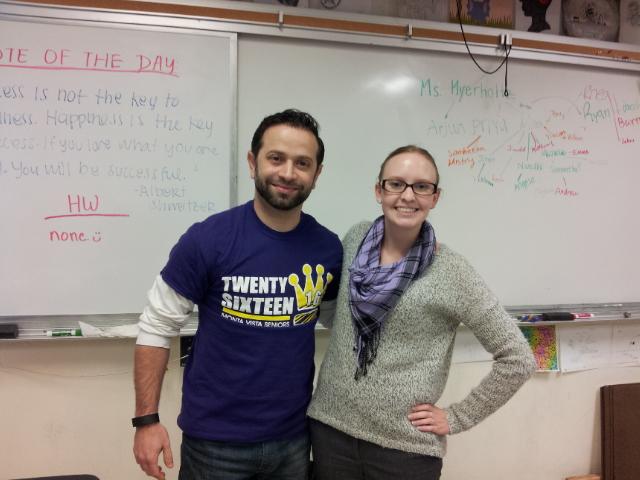 Student teacher Amber Myerholtz and science teacher Pooya Hajjarian both attended MVHS and returned to MVHS for their student teaching programs. Because they were previous students, they both feel like they can connect to MVHS students especially well. Photo by Amanda Chan.
Student teacher Amber Myerholtz and science teacher Pooya Hajjarian both attended MVHS and returned to MVHS for their student teaching programs. Because they were previous students, they both feel like they can connect to MVHS students especially well. Photo by Amanda Chan.
“We both understand the stresses of Monta Vista, we both understand that we don’t want to give assignments that cause that extra stress,” Myerholtz said. “We’re very much on the same page.”
Getting into the classroom
Many of the student teachers at MVHS are from nearby San Jose State and Santa Clara University. Hannah Gould, the student teacher for English teacher Jackie Corso, is currently enrolled in SCU’s teaching credential program. But getting into a classroom as a student teacher isn’t as easy as it looks — it requires going through a challenging series of tests. Potential student teachers are assessed in the form of a written test for general knowledge, their specific subject and actual teaching skills including designing instruction for classroom and assessing student learning.

Most student teachers begin the year by simply observing. As the year goes on, the student teacher gradually teaches more lessons and by second semester, the student teacher will take over at least two classes. Myerholtz and Hajjarian have set it up so that she teaches a couple lessons each week so that there won’t be a hard transition when she completely takes over on day one of the second semester. The literature class setting is slightly different, as Gould only teaches lessons every now and then. Her main role currently is to just observe and support Corso. But when Jan. 4, the first day of second semester, rolls around, both Myerholtz and Gould will hit the ground running and completely take over two to three of their master teachers’ classes.
This might prove to be a jarring change for Gould’s new students, but she believes that they will transition smoothly after a short amount of time. For Gould, becoming the main teacher will mean taking on a new role and balancing the responsibilities of being both a student and a teacher.
“I think another part is just getting comfortable with being an authoritative figure and being in front of the classroom,” Gould said.
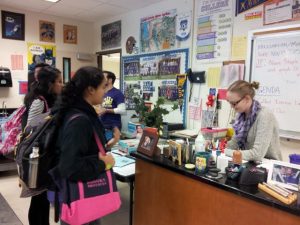
Learning through teaching
According to both Gould and Myerholtz, being a student teacher provides invaluable learning experience that cannot be learned by just taking teaching classes, so it’s no surprise that most teaching credential programs require student teaching to earn a master’s degree. Student teachers can’t learn to be teachers by just sitting in a classroom and getting lectured at. They have to be in the classroom, actively learning, and being guided by a mentor teacher, to gain the skills needed to be a teacher. Classroom management, creating fair assessments and giving students useful feedback are just a portion of the skills that student teachers actively learn in the classroom. And that’s when their skills are actually put to the test.
“Sometimes even after first period of teaching a lesson, I realize that something about it didn’t work quite right and I revise it,” Gould said. “When you’re writing a paper for a class, you think ‘Oh, this is a fine idea, and I’ll turn it in’ but here you really figure out in real time if it works or if it doesn’t.”

















